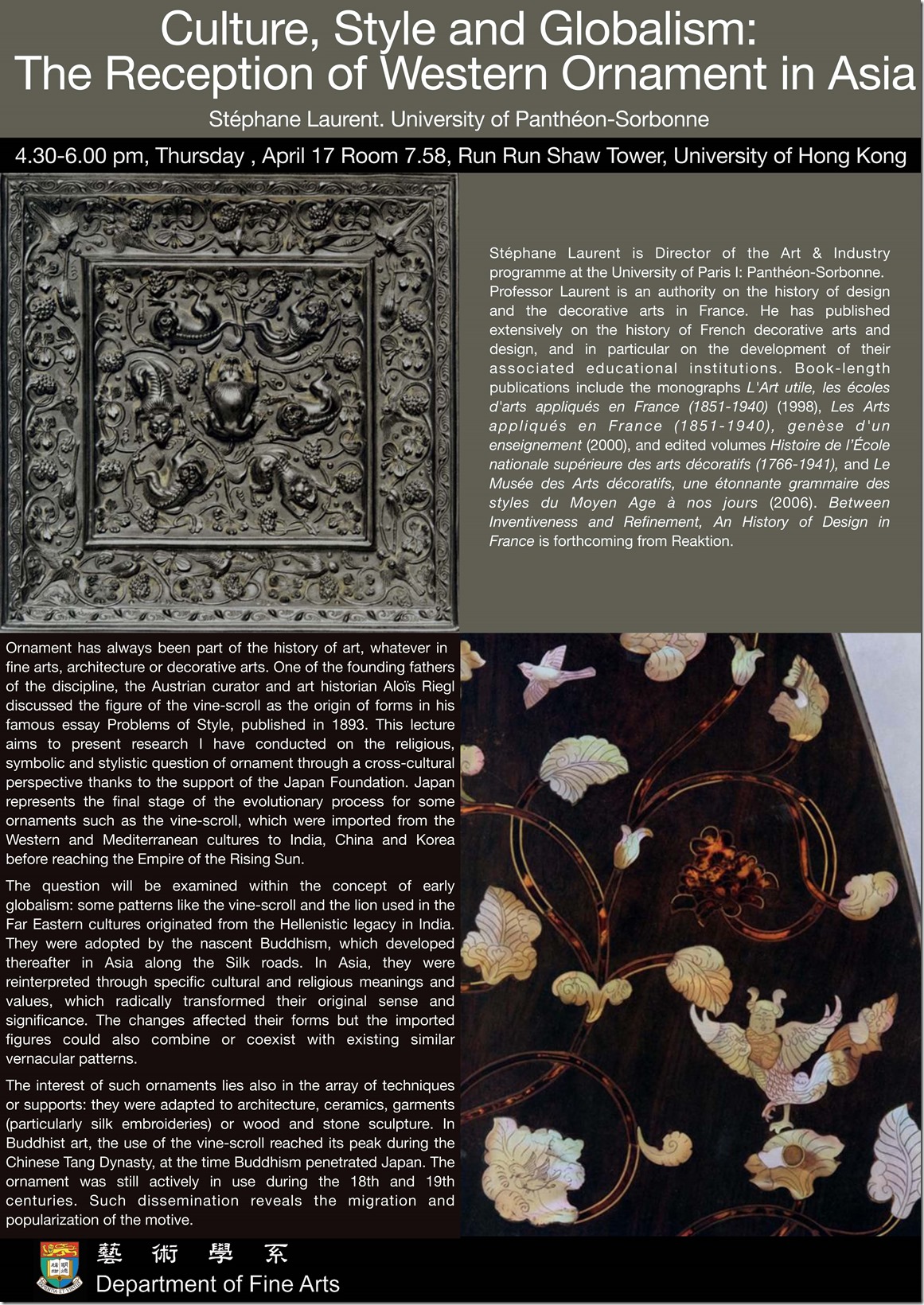

Culture, Style and Globalism: The Reception of Western Ornament in Asia
April 17, 2014 @ 4:30 pm - 6:00 pm
Culture, Style and Globalism: The Reception of Western Ornament in Asia
Date: 17 April 2014 (Thursday)
Time: 4:30-6:00pm
Venue: Room 7.58, Run Run Shaw Tower, Centennial Campus
Ornament has always been part of the history of art, whatever in fine arts, architecture or decorative arts. One of the founding fathers of the discipline, the Austrian curator and art historian Alois Riegl discussed the figure of the vine-scroll as the origin of forms in his famous essay Problem of Style, published in 1893. This lecture aims to present research I have conducted on the religious, symbolic and stylistic question of ornament through a cross-cultural perspective thanks to the support of the Japan Foundation. Japan represents the final stage of the evolutionary process for some ornaments such as the vine-scroll, which were imported from the Western and Mediterranean cultures to India, China and Korea before reaching the Empire of the Rising Sun.
The question will be examined within the concept of early globalism: some patterns like the vine-scroll and the lion used in the Far Eastern cultures originated from the Hellenistic legacy in India. They were adopted by the nascent Buddhism, which developed thereafter in Asia along the Silk roads. In Asia, they were reinterpreted through specific cultural and religious meanings and values, which radically transformed their original sense and significance. The changes affected their forms but the imported figures could also combine or coexist with existing similar vernacular patterns.
The interest of such ornaments lies also in the array of techniques or supports: they were adapted to architecture, ceramics, garments (particularly silk embroideries) or wood and stone sculpture. In Buddhist art, the use of the vine-scroll reached its peak during the Chinese Tang Dynasty, at the time Buddhism penetrated Japan. The ornament was still actively in use during the 18th and 19th centuries. Such dissemination reveals the migration and popularization of the motive.
Speaker: Stéphane Laurent
Stéphane Laurent is Director of the Art & Industry programme at the University of Paris I: Panthéon-Sorbonne. Professor Laurent is an authority on the history of design and the decorative arts in France. He has published extensively on history of French decorative arts and design, and in particular on the development of their associated educational institutions. Book-length publications include the monographs L’Art utile, les écoles d’arts appligués en France (1851-1940) (1998), Les Arts appliqués en France (1851-1940), genése d’un enseignement (2000), and edited volumes Histoire de I’École nationale supérieure des art décoratifs (1766-1941), and Le Musée des Arts décoratifs, une étonnate grammaire des styles du Moyen Age à nos jours (2006). Between Inventiveness and Refinement, An History of Design in France is forthcoming from Reaktion.



Find us on…